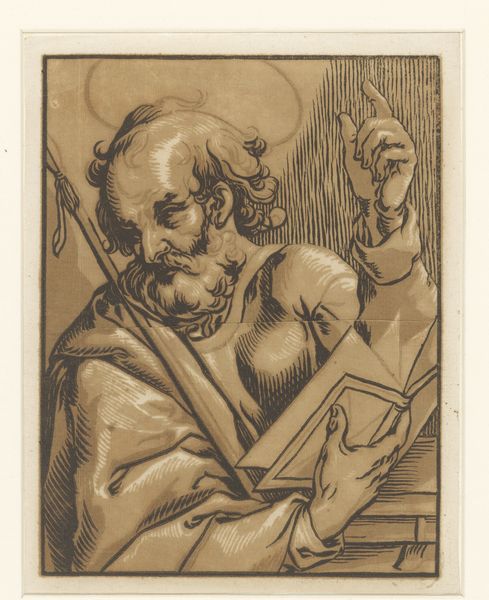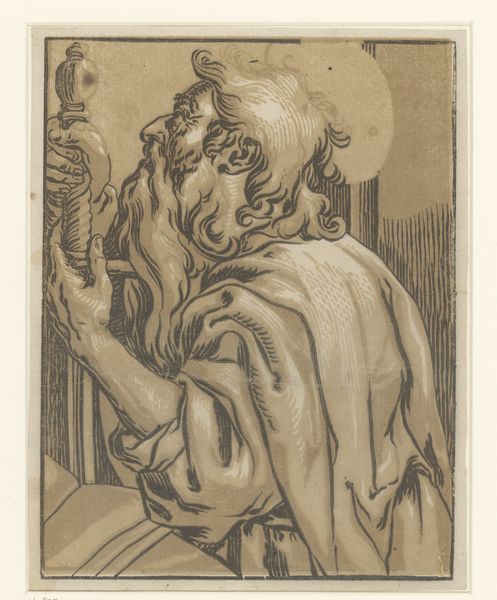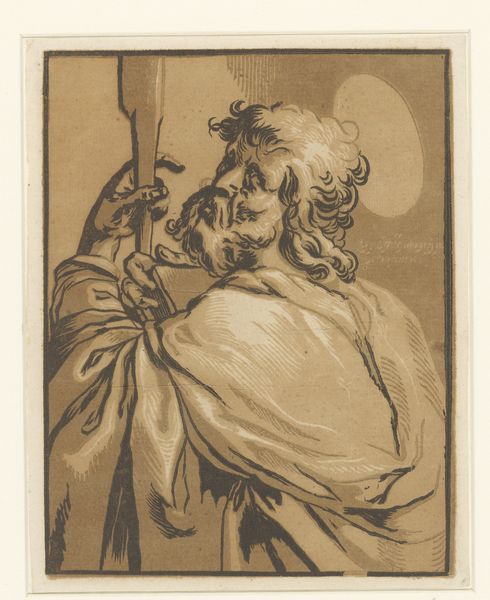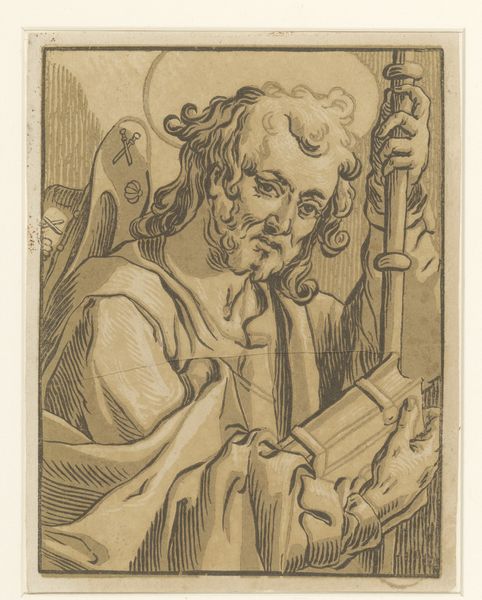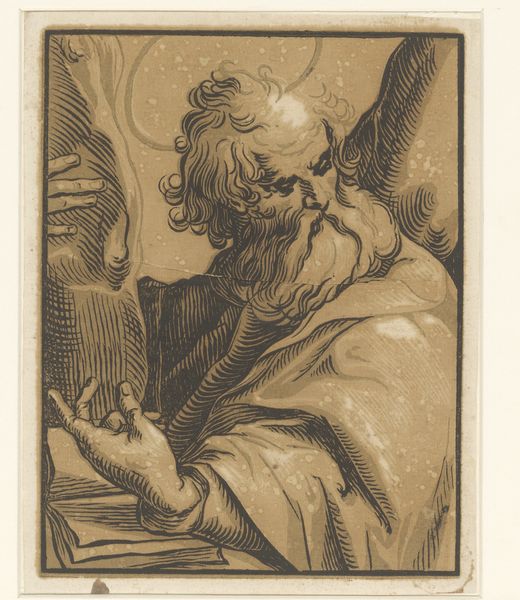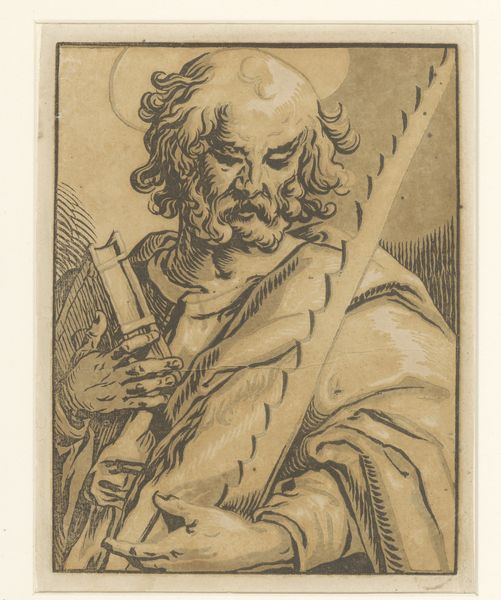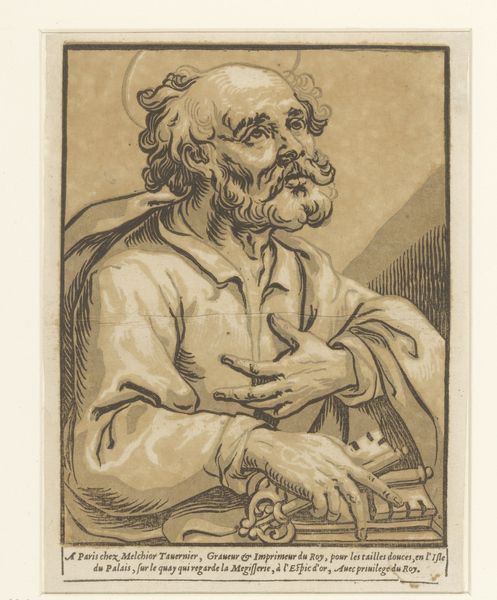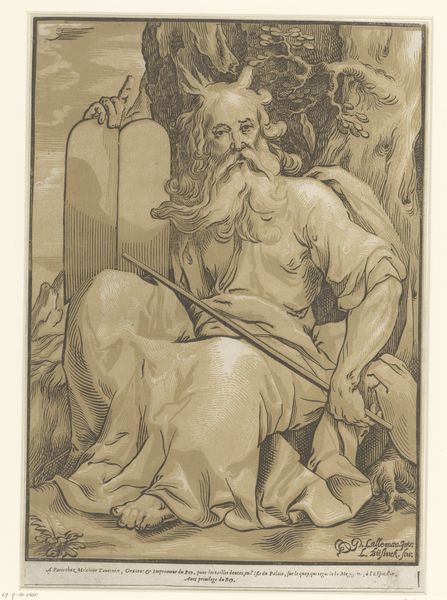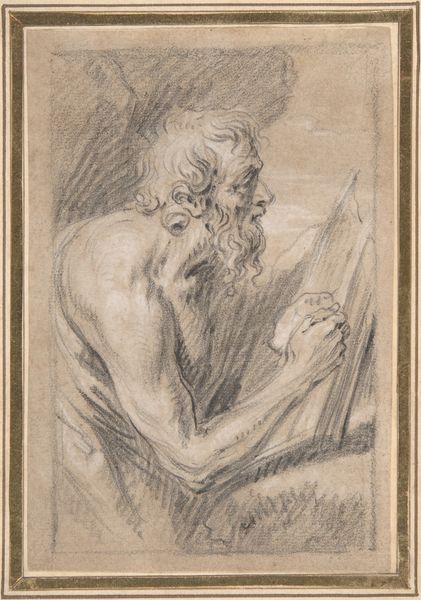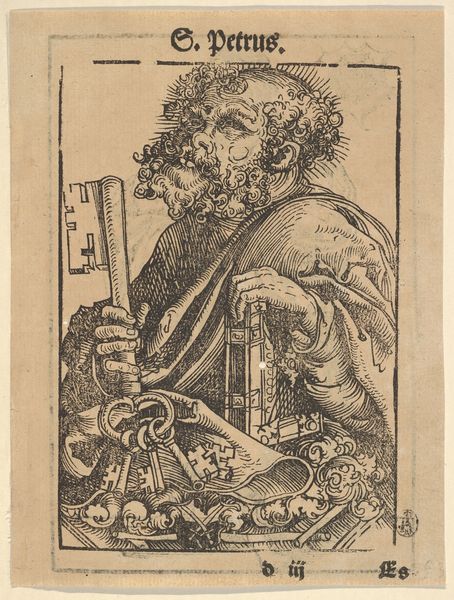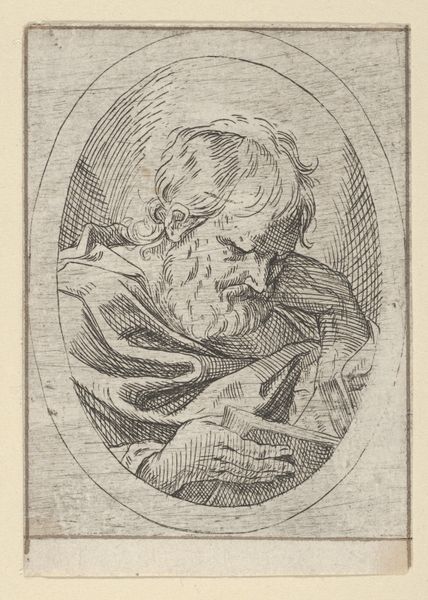
drawing, ink
#
portrait
#
drawing
#
baroque
#
caricature
#
figuration
#
ink
#
portrait drawing
#
history-painting
#
academic-art
Dimensions: height 210 mm, width 159 mm
Copyright: Rijks Museum: Open Domain
Ludwig Büsinck made this chiaroscuro woodcut of the Apostle Thomas sometime in the early to mid-17th century. It presents the apostle not just as a religious figure but also, through the builder's square, as a symbol of reason and proof. Büsinck worked in France and was the first to introduce the chiaroscuro woodcut technique there, a technique that uses different blocks to create contrast and volume. This print reflects the religious and intellectual climate of its time. Northern Europe was in the throes of the Reformation, which called for a more personal and reasoned engagement with religious texts. The choice of Thomas, known for his doubt, and the inclusion of the square as a symbol of the builder's trade, suggest an appeal to the era's growing emphasis on empirical evidence and individual understanding. To fully appreciate this work, we might delve into emblem books and iconographic guides, researching the symbolic meanings associated with professions in the 17th century. This helps us understand how this print engages with contemporary debates about faith, reason, and the role of individuals in interpreting sacred texts.
Comments
No comments
Be the first to comment and join the conversation on the ultimate creative platform.
